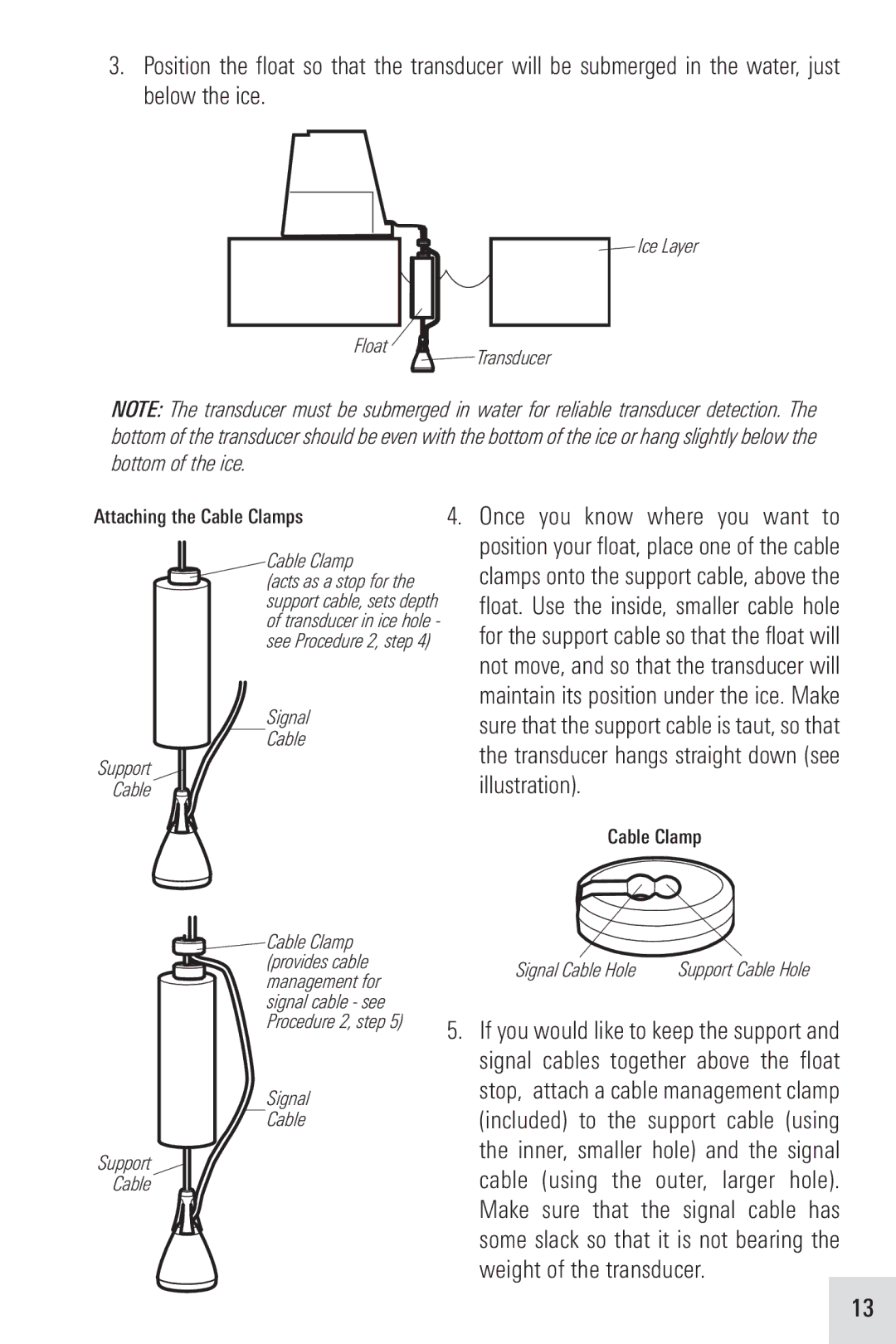
3.Position the float so that the transducer will be submerged in the water, just below the ice.
 Ice Layer
Ice Layer
Float 

 Transducer
Transducer
NOTE: The transducer must be submerged in water for reliable transducer detection. The bottom of the transducer should be even with the bottom of the ice or hang slightly below the bottom of the ice.
Attaching the Cable Clamps
Cable Clamp
(acts as a stop for the support cable, sets depth of transducerin ice hole - see Procedure2, step 4)
Signal
Cable
Support![]()
Cable
![]()
![]()
![]()
![]()
![]() Cable Clamp
Cable Clamp
(providescable managementfor signal cable - see Procedure2, step 5)
Signal
Cable
Support
Cable
4.Once you know where you want to position your float, place one of the cable clamps onto the support cable, above the float. Use the inside, smaller cable hole for the support cable so that the float will not move, and so that the transducer will maintain its position under the ice. Make sure that the support cable is taut, so that the transducer hangs straight down (see illustration).
Cable Clamp
Signal Cable Hole | Support Cable Hole |
5.If you would like to keep the support and signal cables together above the float stop, attach a cable management clamp (included) to the support cable (using the inner, smaller hole) and the signal cable (using the outer, larger hole). Make sure that the signal cable has some slack so that it is not bearing the weight of the transducer.
13
